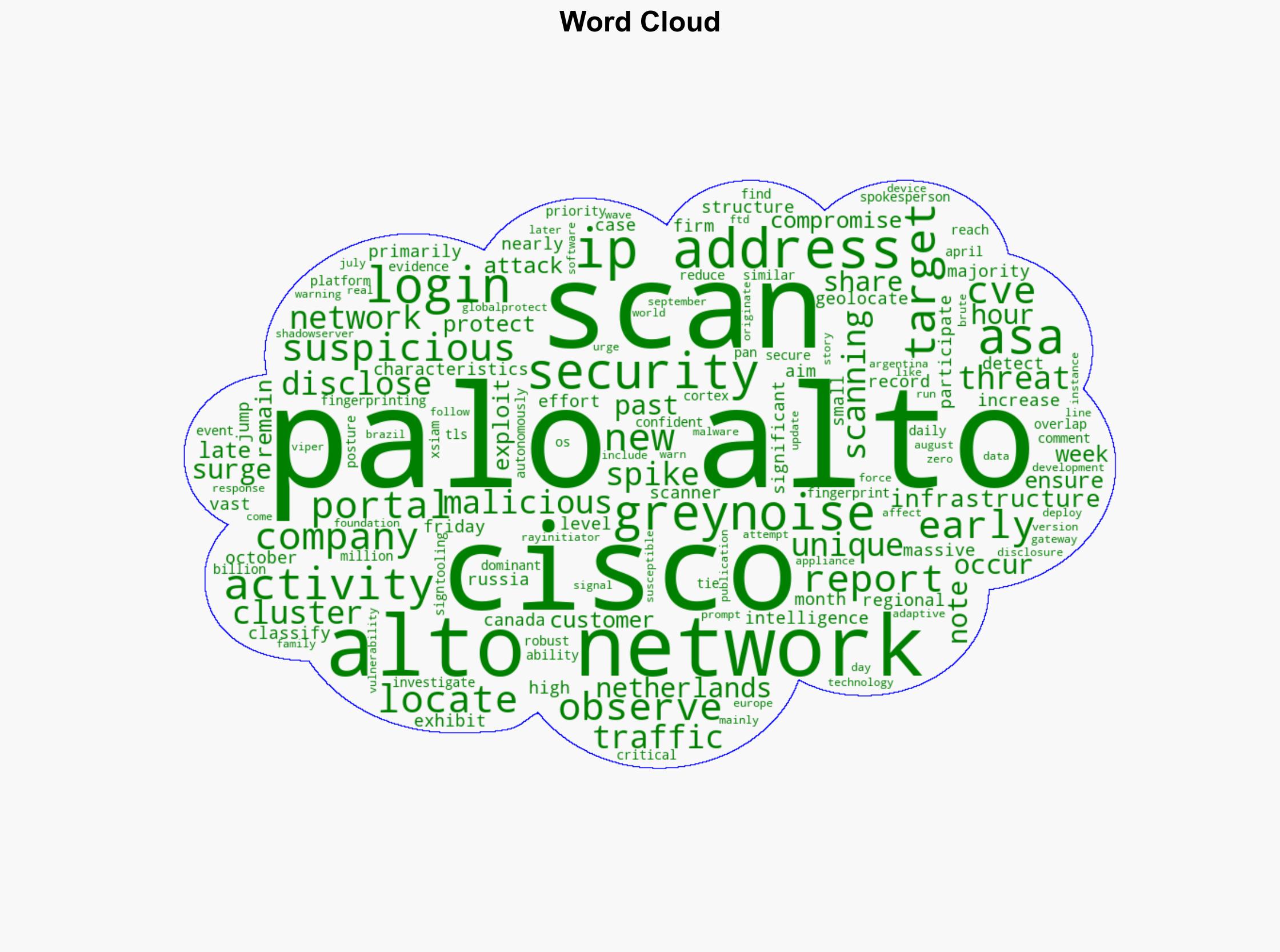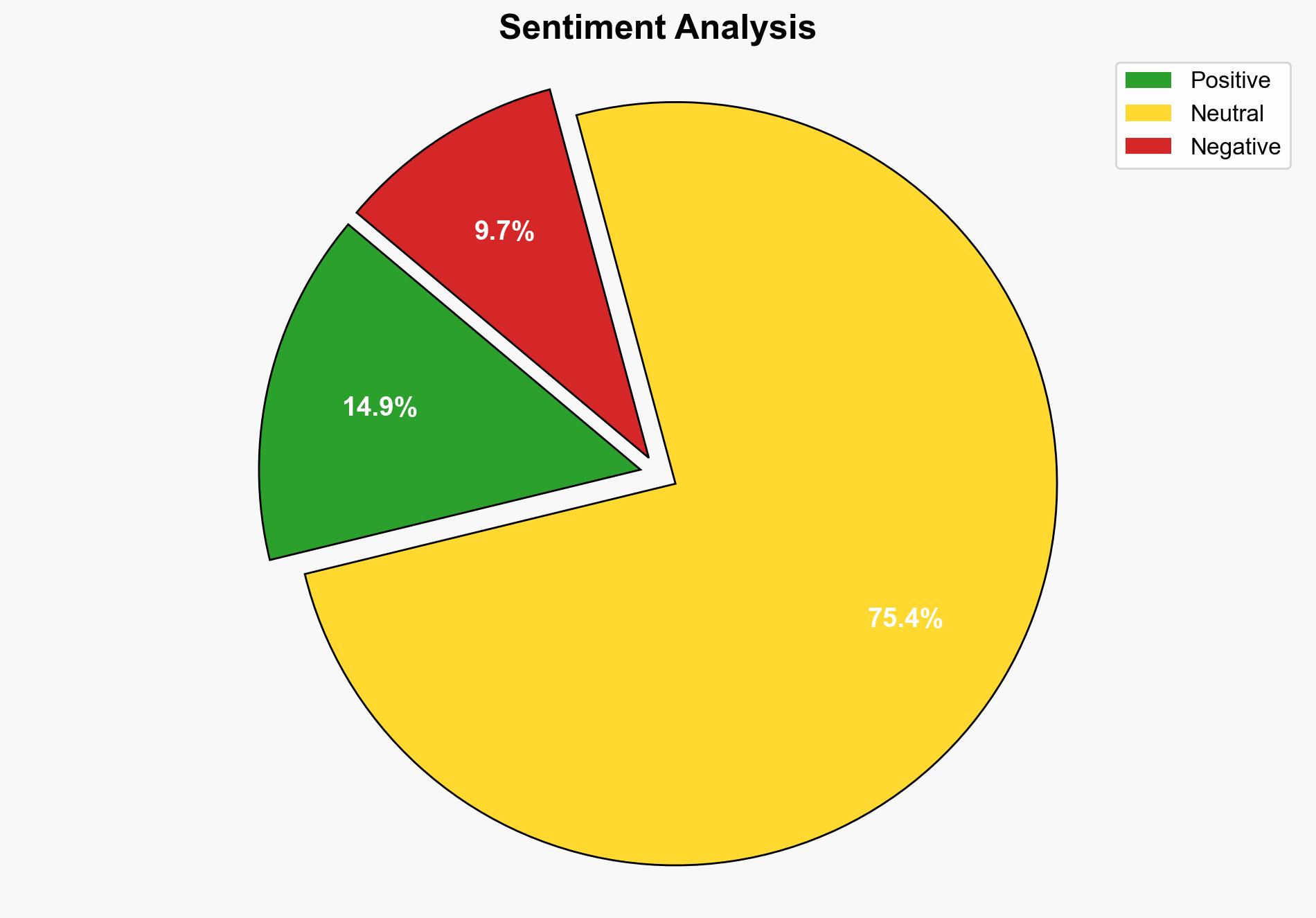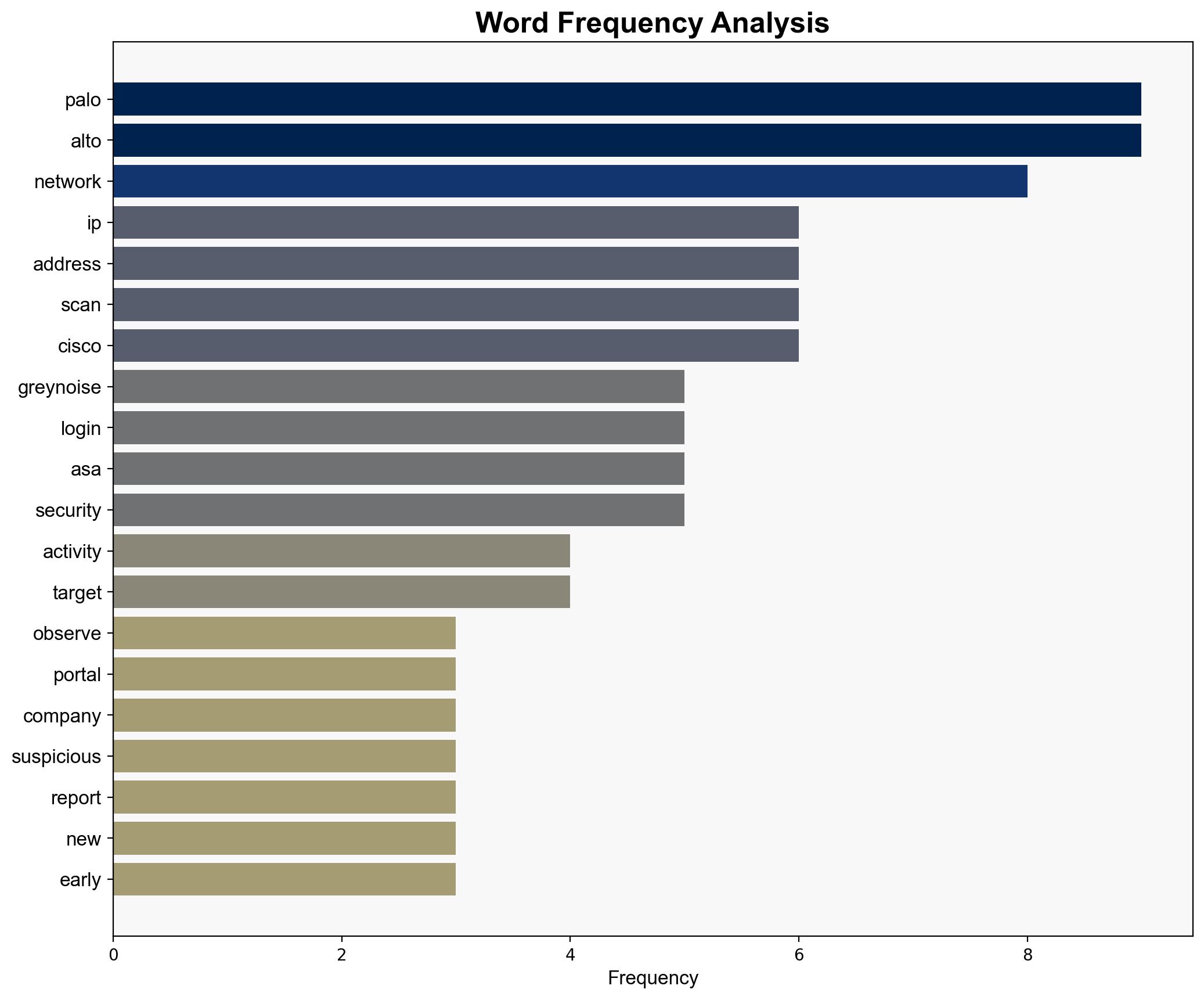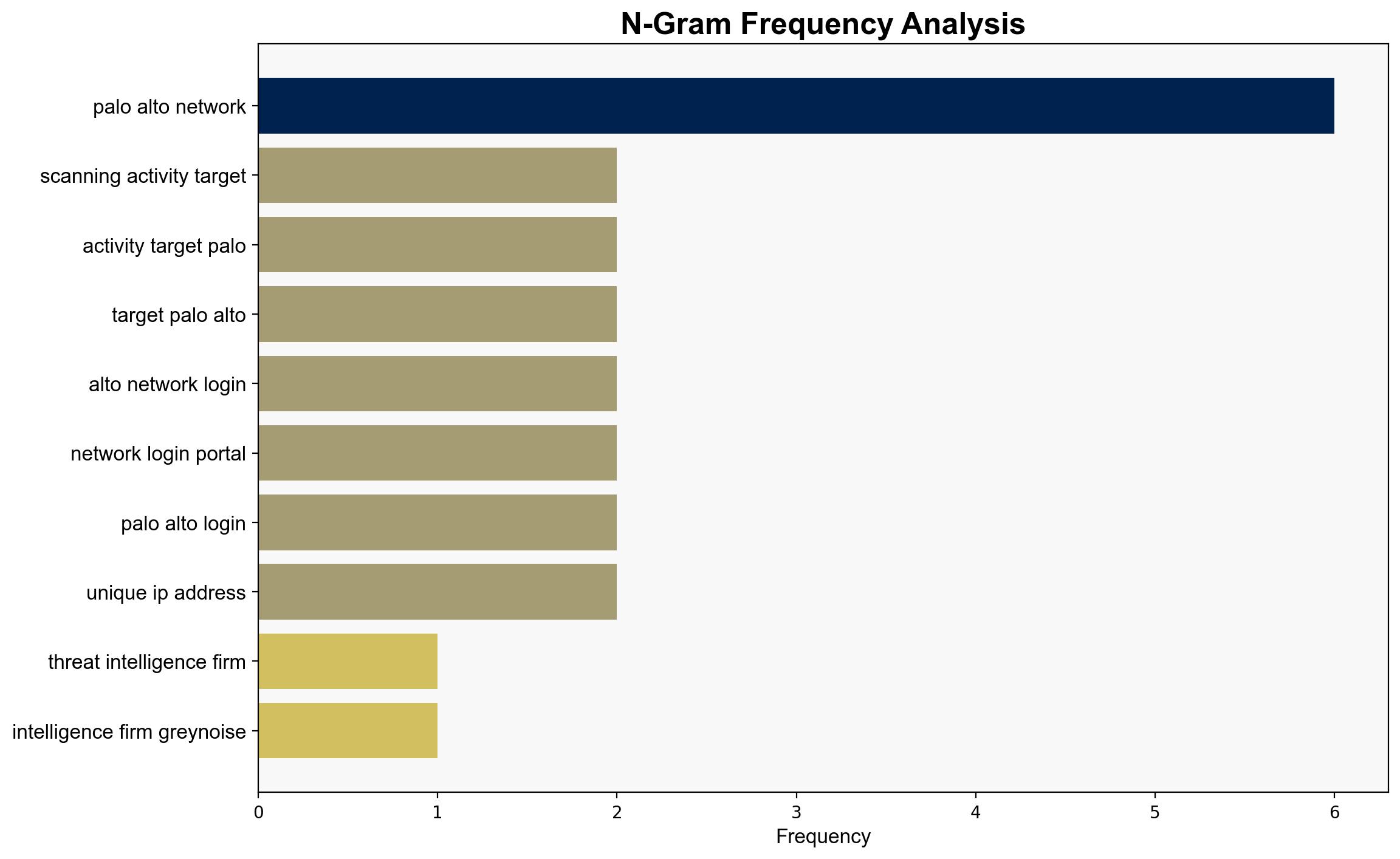Scanning Activity on Palo Alto Networks Portals Jump 500 in One Day – Internet
Published on: 2025-10-04
Intelligence Report: Scanning Activity on Palo Alto Networks Portals Jump 500 in One Day – Internet
1. BLUF (Bottom Line Up Front)
The sudden increase in scanning activity targeting Palo Alto Networks portals is likely a precursor to a coordinated cyber attack, potentially exploiting newly discovered vulnerabilities. The most supported hypothesis is that this activity is part of a broader reconnaissance effort by a state-sponsored group or a sophisticated cybercriminal organization. Confidence level: Moderate. Immediate action is recommended to enhance monitoring and update security protocols.
2. Competing Hypotheses
1. **Hypothesis A**: The scanning activity is part of a coordinated reconnaissance operation by a state-sponsored actor or a sophisticated cybercriminal group aiming to exploit vulnerabilities in Palo Alto Networks systems, similar to previous patterns observed with Cisco ASA devices.
2. **Hypothesis B**: The spike in scanning activity is due to independent cybercriminals or automated bots seeking to exploit any known vulnerabilities opportunistically, without a coordinated or targeted approach.
Using the Analysis of Competing Hypotheses (ACH) 2.0, Hypothesis A is better supported due to the regional clustering of IP addresses, the similarity in TLS fingerprinting with past sophisticated attacks, and the historical context of similar activities preceding known vulnerabilities.
3. Key Assumptions and Red Flags
– **Assumptions**: It is assumed that the clustering of IP addresses and fingerprinting similarities directly correlate with coordinated efforts. There is also an assumption that the scanning activity is malicious rather than benign research or testing.
– **Red Flags**: The lack of direct evidence linking the scanning activity to a specific threat actor or group. The possibility of misattribution due to shared infrastructure or proxy usage.
– **Blind Spots**: Potential undisclosed vulnerabilities in Palo Alto Networks systems that could be exploited, as well as the possibility of insider threats or compromised third-party vendors.
4. Implications and Strategic Risks
The scanning activity suggests a heightened risk of cyber attacks targeting critical infrastructure and sensitive data. If linked to state-sponsored actors, this could escalate geopolitical tensions, especially if critical national infrastructure is compromised. Economically, successful exploitation could lead to significant financial losses and reputational damage for affected organizations. The psychological impact includes increased anxiety and distrust among stakeholders and customers.
5. Recommendations and Outlook
- Enhance network monitoring and anomaly detection systems to identify and mitigate potential breaches swiftly.
- Ensure all systems are updated with the latest security patches and conduct regular vulnerability assessments.
- Engage in information sharing with industry peers and government agencies to stay informed about emerging threats.
- Scenario Projections:
- Best Case: The scanning activity is benign, and no vulnerabilities are exploited.
- Worst Case: A coordinated attack leads to significant breaches and data loss.
- Most Likely: Increased attempts to exploit known vulnerabilities, with varying degrees of success.
6. Key Individuals and Entities
No specific individuals are identified in the intelligence. Entities involved include Palo Alto Networks, Greynoise, and potentially state-sponsored groups or sophisticated cybercriminal organizations.
7. Thematic Tags
national security threats, cybersecurity, counter-terrorism, regional focus





